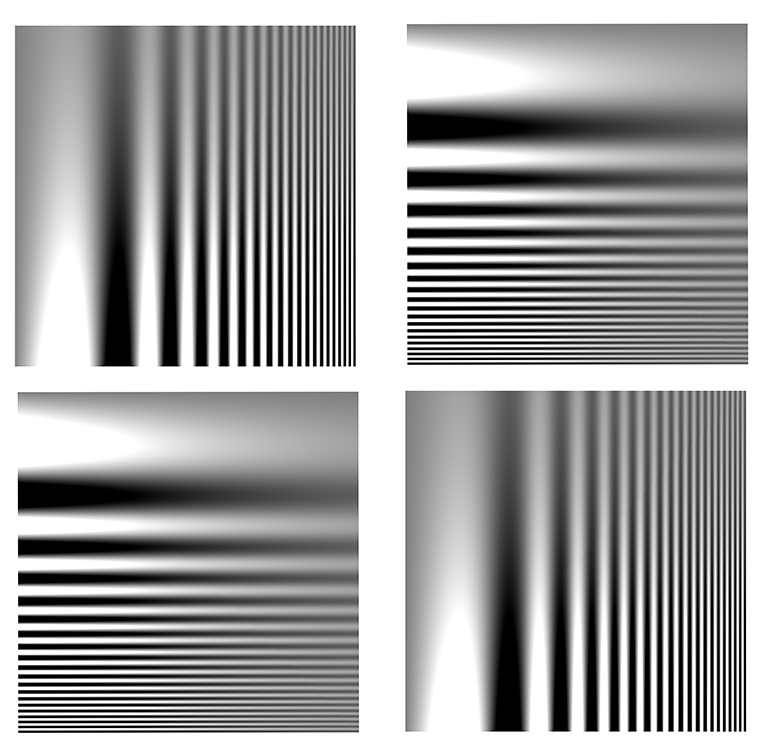A poster on DPR claimed that the contrast-detection autofocus (CDAF) and the focus peaking on the Sony a7x cameras are the result of the same hardware and software. I begged to differ, and offered the focus-peaking anisotropy that I’d demonstrated earlier as evidence. He said that the CDAF did that, too.
Hmm… Looks like something I should test.
I took a Sony a7II and turned off phase-detection autofocus (PDAF) which would confuse things. I put the Zony 55 on it, and set it to wide open. I set the ISO to 100, pasted a target that looks like this to the wall:
This target has sinusoidal modulation with an amount of contrast that varies in a uniform fashion, and also has the modulation frequency changing in a predictable way.
I put the camera on a tripod, set the focusing to Flexible Spot, AF-S, turned the light down to get the exposure to a few tenths of a second, and looked for the places on the vertical and the horizontal target where the camera could just barely focus. There was some difference between the two target orientations, favoring vertical lines.
However, the CDAF was not at all like peaking, where horizontal lines produced no peaking at all. The CDAF was very capable of focusing on parts of the target containing only a single low contrast horizontal structure.
Therefore, I conclude that the mechanism by which the peaking indications are generated is not the same at that which performs CDAF.

Leave a Reply